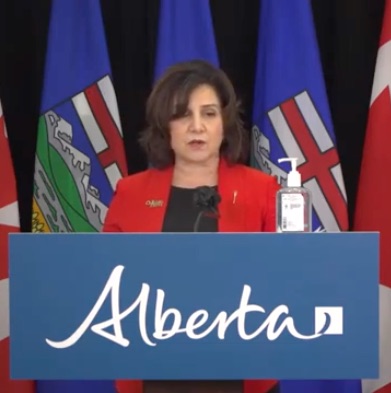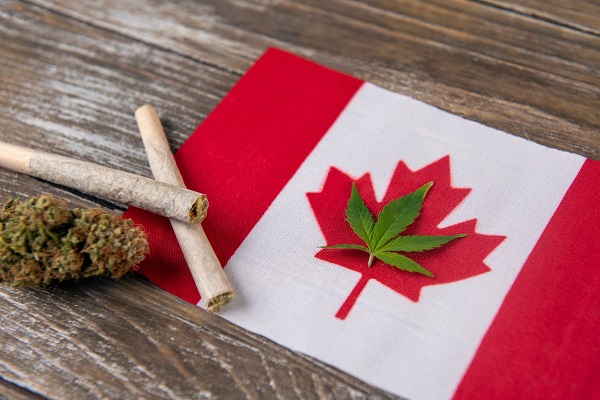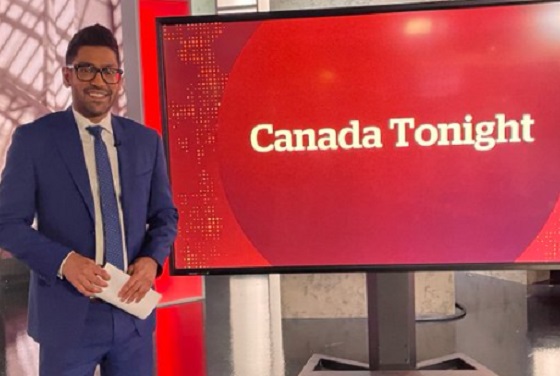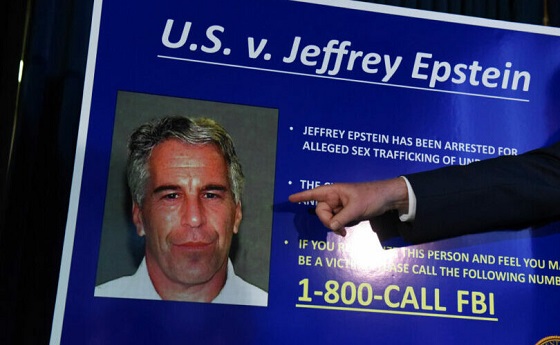Alberta
More dollars going into classrooms to support today’s students

Staffing projections show up to 1,600 more teachers and support staff will be hired in the upcoming school year. Alberta’s government is also providing school authorities additional funding to support higher salaries for teachers, address enrolment growth and support francophone education.
More staff in schools
School authorities are projecting up to 800 more teachers and principals will be hired in the upcoming school year. This represents an increase of 2.2 per cent from the certificated staff in the 2021/22 school year and means more teachers in the classroom supporting Alberta’s students.
Additionally, an increase of approximately 800 support staff is also expected. This includes classroom-based educational and teacher assistants and represents an increase of 3.1 per cent from the previous school year.
“I’m thrilled to see more teachers and educational assistants will be hired in the coming school year. Alberta’s school board reserve policy has played an important role in directing today’s education dollars towards today’s students.”
Funding to support higher salaries for teachers
Alberta’s government is also providing up to an additional $50 million in 2022/23 to cover recently ratified bargaining agreements with teachers. By funding these agreements, Alberta’s government is further ensuring stability for school authorities.
“ASBA appreciates that the government will provide funding for the recently ratified teacher bargaining agreements in addition to providing targeted supports for enrolment growth as school boards face rapidly increasing student populations. This funding will help offset pressures and enable boards to address operational needs while they continue to make informed decisions in support of students and their local school communities across Alberta.”
“ASBOA welcomes the commitment to fund teacher collective agreements, and the additional funding to support enrolment growth and francophone education in Alberta. This announcement provides greater funding certainty for publicly funded education as we are about to start a new school year.”
Additional funding for enrolment growth
More than $7 million in additional funding will be provided to school authorities through a new enrolment growth grant. Early childhood services (ECS) operators will also receive support if they see significant enrolment increases.
The funding available through this new supplemental enrolment growth grant provides for additional student funding for authority enrolment growth above a set threshold, with higher rates for more growth.
“While the CASS Board of Directors recognizes that the current funding formula softens the impact of enrollment decline, we are pleased to see that this announcement will allow divisions to better meet their needs when addressing significant enrollment growth.”
“The Association of Independent Schools & Colleges in Alberta appreciates the additional funding that is being allocated to school authorities that are seeing significant growth. The Supplemental Enrollment Grant will allow schools to better meet the needs of a growing student population, and ensure their students receive an educational experience that prepares them for future success.”
Redesigned grant for francophone school authorities
About $5 million in additional funding will be provided to francophone school boards through an updated francophone equivalency grant. This increased investment means that in the 2022/23 school year, Alberta Education will allocate $7 million to francophone school authorities to support francophone education in Alberta.
“The Fédération des conseils scolaires francophones de l’Alberta welcomes the announcement of an adjustment to school funding to better meet the needs of francophone students in the province. We appreciate the collaborative work that has taken place over the past few months to make the challenges faced by francophone school boards heard. Their reality is unique and the response to their challenges must, by that very fact, be unique.”
Quick facts
- Increased staffing levels will be supported by the use of operating reserves in the 2022/23 school year.
- The Minister of Education recently approved 64 requests to use operating reserves for the 2022/23 school year. This included $88 million in requests for reserves to be spent on staffing, instruction and educational assistants.
- By the end of the 2022/23 school year, maximum operating reserve amounts will be set for school boards, as described in the Funding Manual for School Authorities to ensure public dollars go to educational purposes in the same year the funding is provided.
- The limit on allowable reserve balances was signaled to school jurisdictions with the new funding model in 2020.
- School authorities will also receive additional funding from the province to support higher than expected fuel costs, while monthly average diesel prices exceed $1.25 per litre.
Alberta
Alberta school boards required to meet new standards for school library materials with regard to sexual content

Alberta’s government has introduced new standards to ensure school library materials are age-appropriate.
School libraries should be safe and supportive places where students can learn and explore without being exposed to inappropriate sexual content. However, in the absence of a consistent standard for selecting age-appropriate library materials, school boards have taken different approaches, leading to concerns about safeguards in place.
In response to these concerns, and informed by feedback from education partners and the public, Alberta’s government has created standards to provide school boards with clear direction on the selection, availability and access to school library materials, such as books.
“Our actions to ensure that materials in school libraries don’t expose children to sexual content were never about banning books. These new standards are to ensure that school boards have clear guidance to ensure age-appropriate access to school library materials, while reflecting the values and priorities of Albertans.”
The new standards set clear expectations for school library materials with regard to sexual content and require school boards to implement policies to support these standards.
Standards for school library materials
Under the new standards, school libraries are not permitted to include library materials containing explicit sexual content. Non-explicit sexual content may be accessible to students in Grade 10 and above, provided it is age-appropriate.
“Protecting kids from explicit content is common sense. LGBTQ youth, like all children, deserve to see themselves in stories that are age-appropriate, supportive and affirming – not in material that sexualizes or confuses them.”
School boards must also regularly review their school library collections, publish a full list of available materials and ensure that a staff member supervises students’ access to school library materials. School boards will have to remove any materials with explicit sexual content from their school libraries by October 1.
School board policies and procedures
All school boards must have publicly available policies that align with the new standards for selecting and managing library materials by January 1, 2026. School boards can either create new policies or update existing ones to meet these requirements.
These policies must outline how school library materials are selected and reviewed, how staff supervise students’ access throughout the school day, and how a student, parent, school board employee or other member of the school community can request a review or removal of materials in the school library. School boards are also required to clearly communicate these policies to employees, students and parents before January 2026.
“A robust, grade- and age-appropriate library catalogue is vital for student success. We welcome the ministry’s initiative to establish consistent standards and appreciate the ongoing consultation to help craft a plan that will serve our families and communities well.”
“Red Deer Public Schools welcomes the new provincial standards for school library materials. Our division is committed to maintaining welcoming, respectful learning spaces where students can grow and thrive. Under the new standards for school libraries, we remain dedicated to providing learning resources that reflect our values and support student success.”
Quick facts
- The new standards will apply to public, separate, francophone, charter and independent schools.
- The ministerial order does not apply to municipal libraries located within schools or materials selected for use by teachers as learning and teaching resources.
- From May 26 to June 6, almost 80,000 people completed an online survey to provide feedback on the creation of consistent standards to ensure the age-appropriateness of materials available to students in school libraries.
Related information
- Ministerial Order
- School library standards engagement
- Reference Materials: Content warning: this document contains graphic content that may be disturbing to viewers and is not appropriate for young viewers. Viewer discretion is advised.
Alberta
Fourteen regional advisory councils will shape health care planning and delivery in Alberta

Regional health councils give Albertans a voice
Albertans want a health care system that reflects where they live and adapts to the unique needs of their communities. As part of the province’s health care refocus, Alberta’s government committed to strengthening community voices by providing more opportunities for Albertans to bring forward their local priorities and offer input on how to improve the system.
The regional advisory councils, made up of 150 members from 71 communities, will advise Alberta’s four health ministries and the newly refocused health agencies: Primary Care Alberta, Acute Care Alberta, Assisted Living Alberta and Recovery Alberta. Each council will explore solutions to local challenges and identify opportunities for the health system to better support community decision-making.
“By hearing first-hand community feedback directly, we can build a system that is more responsive, more inclusive and ultimately more effective for everyone. I am looking forward to hearing the councils’ insights, perspectives and solutions to improve health care in all corners of our province.”
“Regional advisory councils will strengthen acute care by giving communities a direct voice. Their insights will help us address local needs, improve patient outcomes and ensure timely access to hospital services.”
“A ‘one-size-fits-all’ approach does not address unique regional needs when it comes to mental health and addiction challenges. These councils will help us hear directly from communities, allowing us to tailor supports and services to meet the needs of Albertans where they are.”
“Every community has unique needs, especially when it comes to seniors and vulnerable populations. These regional advisory councils will help us better understand those needs and ensure that assisted living services are shaped by the people who rely on them.”
Members include Albertans from all walks of life, health care workers, community leaders, Indigenous and municipal representatives, and others with a strong tie to their region. About one-third of members work in health care, and more than half of the council chairs are health professionals. Almost one-quarter are elected municipal officials, including 10 serving as chairs or vice-chairs. Ten councils also include a representative from a local health foundation.
Council members will share local and regional perspectives on health care services, planning and priorities to help ensure decisions reflect the realities of their communities. By engaging with residents, providers and organizations, they will gather feedback, identify challenges and bring forward ideas that may not otherwise reach government.
Through collaboration and community-informed solutions, members will help make the health system more responsive, accessible and better able to meet the needs of Albertans across the province.
“As Primary Care Alberta works to improve access to primary health care services and programs across Alberta, we are grateful to have the opportunity to tap into a dedicated group of community leaders and representatives. These people know their communities and local needs, and we look forward to learning from their experiences and knowledge as we shape the future of primary care in Alberta.”
“The regional advisory councils will help to bring forward the voices of patients, families and front-line providers from every corner of Alberta. Their insights will help us plan smarter and deliver care that’s timely, effective and truly local. We look forward to working closely with them to strengthen hospital and surgical services across the province.”
“Nobody understands the health care challenges unique to a community better than the people who live there. The regional health advisory councils are made up of those living and working on the front lines across the province, ensuring we are getting the perspective of Albertans most affected by our health care system.”
“Alongside Recovery Alberta’s staff and physician team, these regional advisory councils will build upon the high standard of mental health, addiction and correctional health services delivered in Alberta.”
Indigenous Advisory Council
Alberta’s government continues to work directly with Indigenous leaders across the province to establish the Indigenous Advisory Council to strengthen health care services for First Nation, Métis and Inuit communities.
With up to 22 members, including Indigenous health care workers, community leaders and individuals receiving health care services, the council will represent diverse perspectives across Alberta. Members will provide community perspectives about clinical service planning, capital projects, workforce development and cultural integration in health care.
Related information
-

 Also Interesting2 days ago
Also Interesting2 days ago9 Things You Should Know About PK/PD in Drug Research
-

 Business2 days ago
Business2 days ago‘Experts’ Warned Free Markets Would Ruin Argentina — Looks Like They Were Dead Wrong
-

 Business2 days ago
Business2 days agoCannabis Legalization Is Starting to Look Like a Really Dumb Idea
-

 Bruce Dowbiggin1 day ago
Bruce Dowbiggin1 day agoThe Covid 19 Disaster: When Do We Get The Apologies?
-

 Media2 days ago
Media2 days agoCBC journalist quits, accuses outlet of anti-Conservative bias and censorship
-

 Business1 day ago
Business1 day agoCarney government should recognize that private sector drives Canada’s economy
-

 Automotive2 days ago
Automotive2 days agoAmerica’s EV Industry Must Now Compete On A Level Playing Field
-

 Alberta1 day ago
Alberta1 day agoFourteen regional advisory councils will shape health care planning and delivery in Alberta





